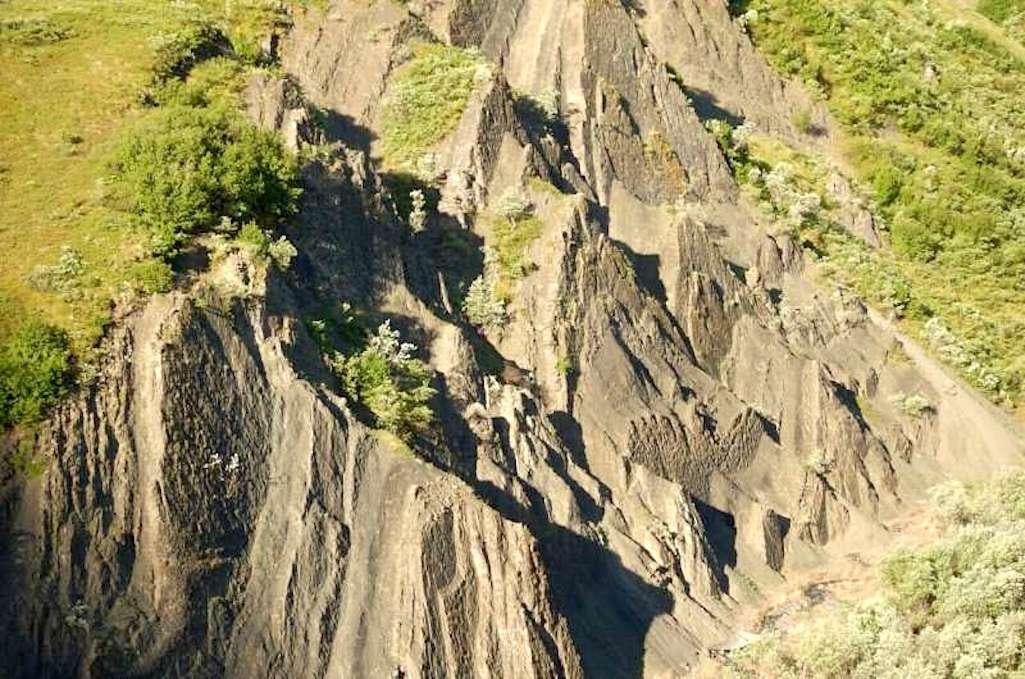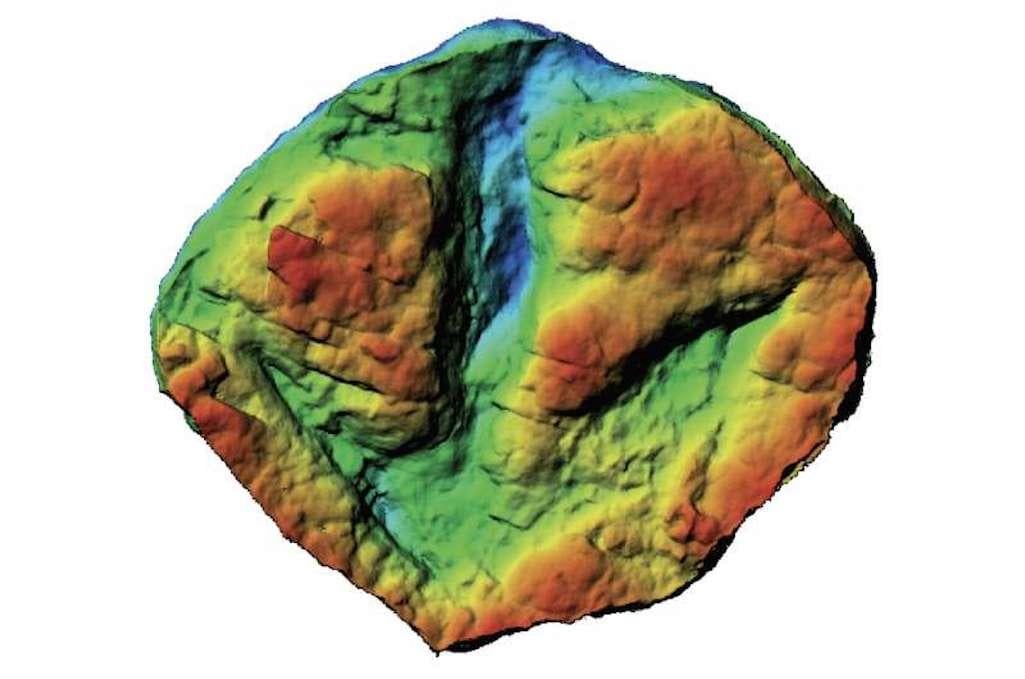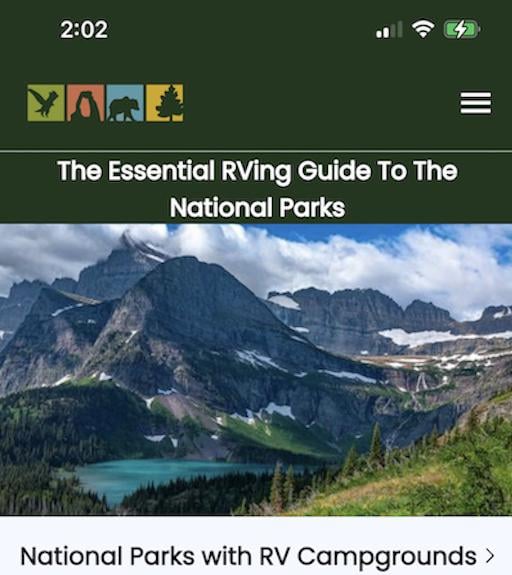
A dinosaur track way found in the backcountry of Denali National Park has been dubbed "The Coliseum" /UAF, Peter Drunkenmiller
Dimples in the flatiron reefs of rock deep within Denali National Park tell stories of hundreds of dinosaurs from the Late Cretaceous Period some 70 million years ago milling about a large floodplain, heading perhaps to a watering hole.
"It's not just one level of rock with tracks on it," said Dustin Stewart, a former University of Alaska Fairbanks graduate student who published a paper about the dinosaur trackway in the journal Historical Biology as part of his master's thesis. "It is a sequence through time. Up until now, Denali had other track sites that are known, but nothing of this magnitude."
At first Stewart and his colleagues were not overly impressed by the tracks when they reached "The Coliseum," as the site has been nicknamed.
"When our colleagues first visited the site, they saw a dinosaur trackway at the base of this massive cliff," Pat Druckenmiller, senior author of the paper and director of the University of Alaska Museum of the North, said in a release from the University of Alaska Fairbanks that appeared in Phys.org (attached below). "When we first went out there, we didn't see much either."
But under the right conditions, with sundown approaching in this case, the dimples, or tracks, were easily seen.
"When the sun angles itself perfectly with those beds, they just blow up," said Stewart. "Immediately all of us were just flabbergasted, and then Pat said, 'Get your camera.' We were freaking out."

A single large meat-eating dinosaur track, likely from a tyrannosaur. The image was made by taking multiple photos from different angles to produce a three dimensional view of the track, accentuated by colors/UAF, Dustin Stewart
Not only were the tracks numerous, but they were incredibly well-preserved.
"You can see the shape of the toes and the texture of the skin," said Drunkenmiller.
Also contained in the reefs of rock, which sprawl across an area roughly equal to one-and-a-half football fields, were fossilized plants, some shellfish species, and plant pollens, the university release said.
"All these little clues put together what the environment looked like as a whole," Stewart said.
The resulting portrait, he continued, was of a river system surrounded by ponds and lakes. The climate was probably more like that found today in the Pacific Northwest, warmer and more humid than present-day Alaska. Surrounding forests contained both hardwood and coniferous trees, ferns and horsetails, the release said. As Earth's tectonic plates were shoved together and lifted up the Alaska Range, the trackways were tilted.
The researchers said the dinosaur footprints belonged to a wide variety of species, from plant eaters along with some predators such as tyrannosaurs, and even wading birds.
"It's amazing to know that around 70 million years ago, Denali was equally impressive for its flora and fauna," Drunkenmiller told the university. "It was forested and it was teeming with dinosaurs. There was a tyrannosaur running around Denali that was many times the size of the biggest brown bear there today. There were raptors. There were flying reptiles. There were birds. It was an amazing ecosystem."



Add comment